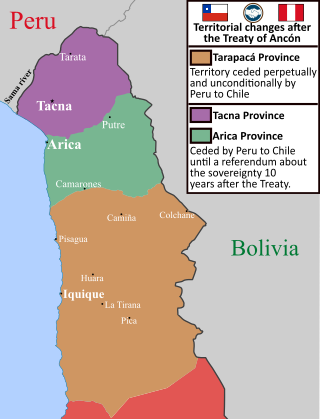
The Treaty of Ancón was a peace treaty signed by Chile and Peru on 20 October 1883, in Ancón, near Lima. It was intended to settle the two nations' remaining territorial differences at the conclusion of their involvement in the War of the Pacific and to stabilise post-bellum relations between them.

Ancon is a district of northern Lima Province in Peru. It is the popular beach resort of Lima that is visited every summer by millions of people from Lima. Is the largest district of the Lima Province.

Carabayllo is one of the 43 districts of the province Lima in Peru. It is located in the Cono Norte area of the province and was created district by General José de San Martín in August 4, 1821 at which time it was the only district to occupy the area north of the Rímac River up to the province Canta.
Ángel Uribe Sánchez, was a football forward player from Peru who played his entire club career for Universitario de Deportes. Uribe also played for the Peru national team on ten occasions between 1960 and 1967. He was part of Peru's squad at the 1960 Summer Olympics.
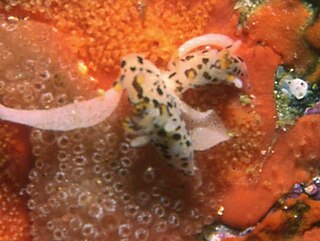
Goniodorididae are a taxonomic family of sea slugs, specifically dorid nudibranchs, marine gastropod molluscs in the order Opisthobranchia.
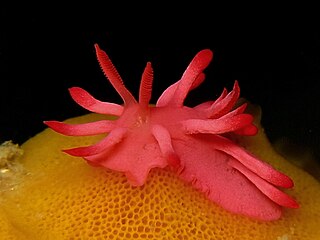
Okenia is a genus of colorful sea slugs, specifically of dorid nudibranchs, marine gastropod mollusks in the family Goniodorididae.

The 1932 season of the Peruvian Primera División, was the 17th season of top-flight Peruvian football. A total of eight teams competed in this league. The national champions were Alianza Lima. No relegated team, because First Division grew to 10 teams for 1933.

Tarapacá was a Department of Peru, which existed between 1878 and 1884, when it was unconditionally ceded to Chile after the War of the Pacific under the Treaty of Ancón.
Hidroaviación was a Peruvian football club that was located in the city of Ancón, Lima. The club was founded with the name of club Hidroaviación and played in Primera Division Peruana from 1929 until 1931. The club was third place of the national tournament in 1929. In 1931, Hidroaviación was relegated and it was their last appearance in the Primera Division Peruana since.

Okenia elegans, the yellow skirt slug, is a species of a sea slug, specifically a dorid nudibranch, a marine gastropod mollusc in the family Goniodorididae. It is the type species of its genus.
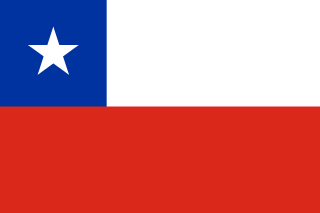
Tarapacá Department was a department in Tarapacá Province, Chile, from 1883 to 1928. It was ceded to Chile under the Treaty of Ancón, formerly being part of the Peruvian province of the same name.

Alfred Nehring was a German zoologist and paleontologist.
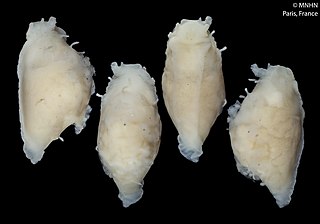
Okenia zoobotryon is a species of sea slug, a dorid nudibranch, a marine gastropod mollusc in the family Goniodorididae. It is normally found on the colonial bryozoan Amathia verticillata on which it lives and feeds.
Okenia hallucigenia is a species of sea slug, specifically a dorid nudibranch, a marine gastropod mollusc in the family Goniodorididae.
Okenia nakamotoensis is a species of sea slug, specifically a dorid nudibranch, a marine gastropod mollusc in the family Goniodorididae.
Okenia harastii is a species of sea slug, specifically a dorid nudibranch, a marine gastropod mollusc in the family Goniodorididae.

Ancon (archaeological site) is located in the north of the Bay of Ancon, in the Ancón District, on the central coast of Peru. It is one of the most important centers of the Peruvian archeology and features a vast necropolis of the pre-Hispanic era, with countless funerary sites. Permanent occupation in Ancon is documented throughout all periods of Andean history. The oldest evidence of human occupation dates back 10,000 years ago to the preceramic period.

Tarapacá was a province in Chile, from 1883 to 1928. It was ceded to Chile under the Treaty of Ancón, formerly being part of the Peruvian province of the same name.











